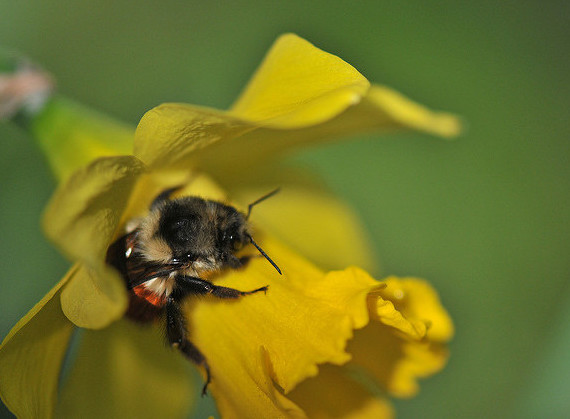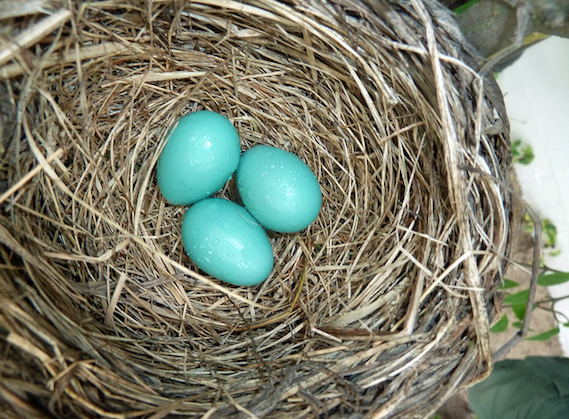The science of spring Inspire article
Getting under the shell of Easter symbols

source: Flickr
For many, the Easter weekend is the epitome of spring and new beginnings; blossoming flowers, chirping chicks, newborn lambs and buzzing bees. As you contemplate how best to cook your eggs for breakfast on Easter Sunday (boiled, fried, scrambled or maybe you’ve skipped straight to the chocolate variety) you might be interested in knowing more about these, and other, fascinating symbols of new life.
Before any animal can raise their young they must have a suitable home in which to lay their eggs. The variety and intricacy of nests seen in nature is remarkable, and you’ll be amazed at some of nature’s architects. As well as providing a safe haven to raise their young, nests serve various other purposes. Bowerbirds, for example, build colourful abodes to attract a mate, whilst compass termites use their mounds for thermoregulation.

Flickr
As soon as a fertile egg is formed the bird must dispense it in their nest and, unsurprisingly, there is also a huge variety of unusual eggs found in the animal kingdom. Once laid, the parent(s) must incubate the egg to ensure the embryo develops correctly. It may be obvious that for this to occur the embryo needs a supply of oxygen, but have you actually considered how a chick can breathe inside it’s hard shell? You can also discover how you might have more in common with birds than you’d have thought.
21 days must pass before a chicken embryo is fully developed and the chick is ready to hatch, but in the meantime it’s hard to imagine what is happening beneath the eggshell. The video below is a fantastic way to understand what is going on, showing the day-by-day development of a chicken embryo. There’s no wasting time – tissue starts to develop from day one, and by day two the heart is already formed and beating. To get a real insight into the development of new life, however, take a look at this article on developing a digital embryo. Using 3D imaging, scientists took snapshots of cells in a zebrafish embryo to show the first 24 hours of development. Amazing!
Alongside tweeting chicks, other signs such as bursting buds, longer days and buzzing bees tell us that spring is on its way. Bumblebees are particularly visible at this time of year, with last summer’s survivors emerging from their winter slumber and searching for a nest-site. Bumblebees, however, have undergone drastic declines in recent years due to changes in land use. Spring is as good a time as any to take action to help wildlife, and back in 2006 we published some ideas for how your school can help these fuzzy insects. Rising global temperatures are also impacting on bees, as well as other creatures throughout the food web. Despite Easter taking place earlier this year, spring has sprung sooner than expected due to these changes in climate, and the Ted Ed video below explains how this affects the natural cycles of plants and animals. Have you or your students noticed nature’s premature reawakening this year?
We hope you enjoy the Easter weekend, but a word of warning: don’t mistake daffodils for spring onions this year or your time off might be longer than anticipated!





